LIMA, Peru – Roberto can’t walk.
A paraplegic since birth Roberto, whose last name I have withheld, suffers from a rare form of child onset arthritis that locked his muscles and took his ability to walk. Today, at 19, he gets around on a small stool that he drags across the floor, his family’s makeshift solution in the absence of a wheelchair. No vehicle would work anyway, not on the steep and often rocky slopes in their neighborhood of Pamplona Del Alto.
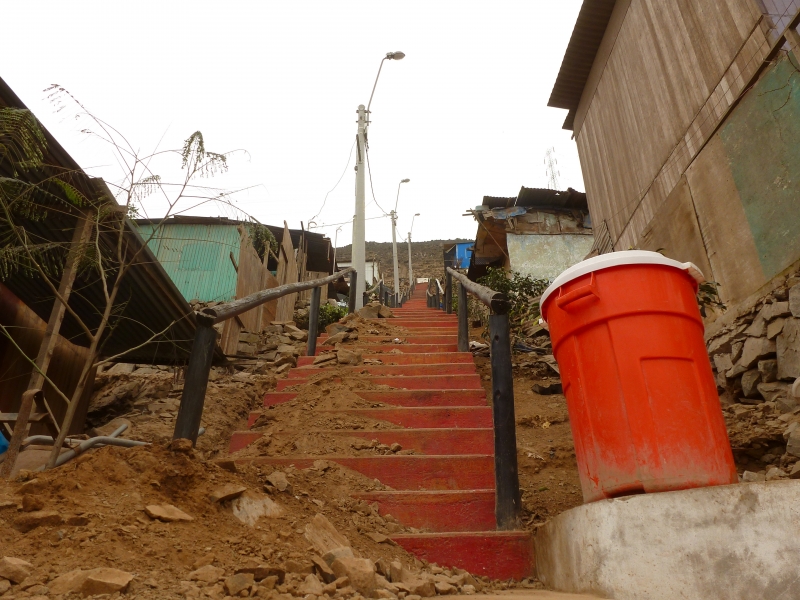
A set of stairs leading up to Roberto’s street, relatively newly built by MedLife volunteers.
Instead Roberto’s father carries the young man to and from his physical therapy appointments, which has gotten harder over the years. No one is entirely sure what will happen when Roberto gets too big, or his father too old, to keep it going. For today, though, it works, and during the day the teenager watches over his little sisters while their parents are at work.
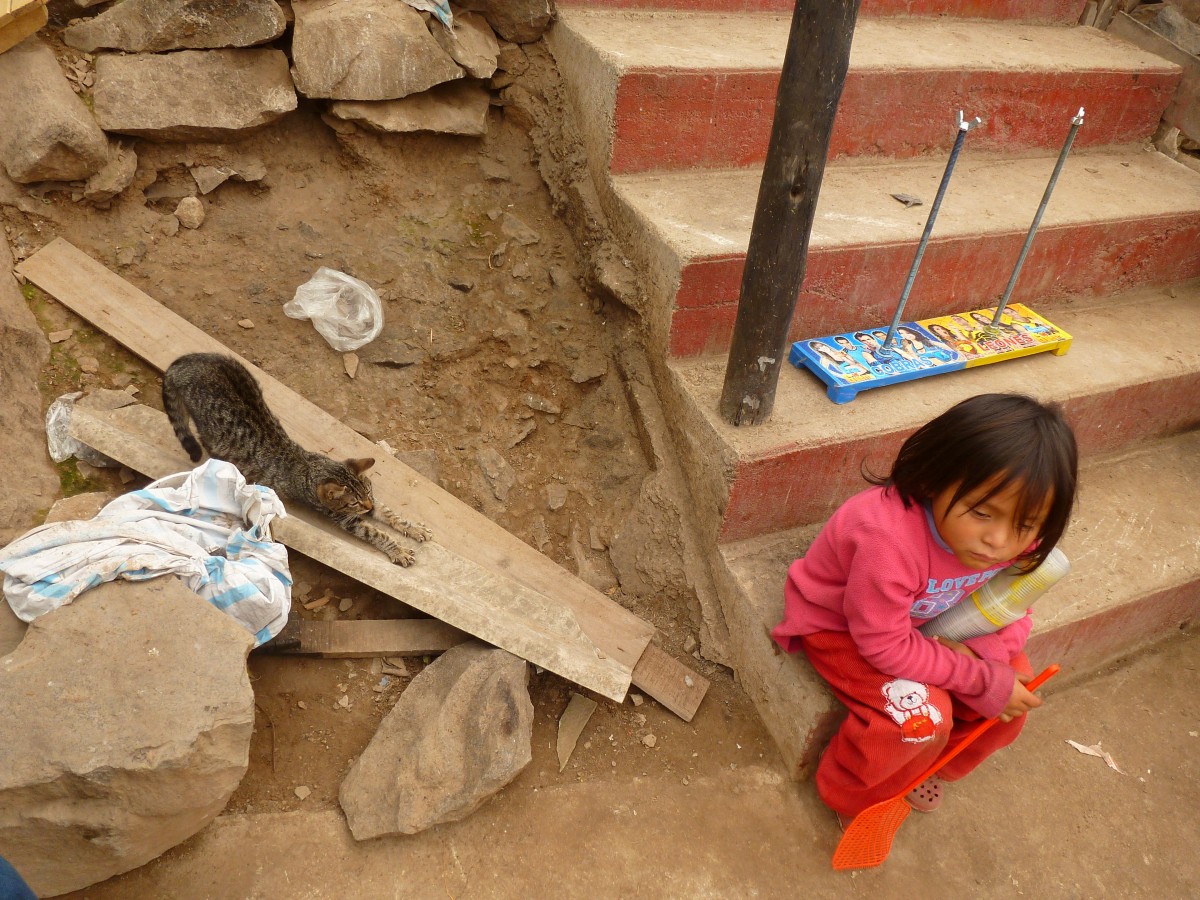
One of Roberto’s two sisters with her kitten.
This is life on the outskirts of Lima, a place the government more or less ignores.
The government doesn’t pay much attention here explained social worker Carlos Benavides with the NGO MedLife, which provides Roberto’s physical therapy. Echoing many residents’ frustrations he explained that politicians do show up around elections. They shake hands, make promises and disappear after the voting, leaving residents still waiting for the arrival of basic services.
Deeply connected with the community, Benavides represents the NGO in these far flung neighborhoods, building the kind of trust that many organizations with foreign staff struggle to build.
And the truth of his words is everywhere… in this dusty place water comes commercial by the barrel and electricity is often the result of home brewed ingenuity. Tall wooden posts are looped around with thick wire of the same kind you would see in a garden fence, often tacked in with nails – the residents’ solution when the local government stopped bothering to extend the power grid.
As for plumbing, it comes courtesy of an Argentinian company, which drives trucks around the city to sell potable water by the gallon.
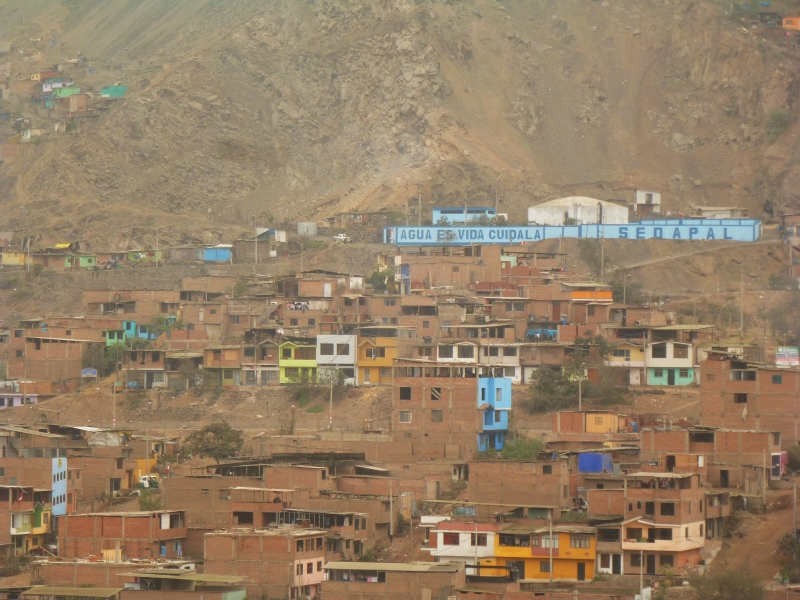
The blue building is the local water depot. From here trucks go out to serve the residents of Pamplona del Alto.
These are forgotten communities at the heart of one of South America’s most vibrant cities, refugees who came here to flee Peru’s troubled history. They live in neighborhoods on the steep hillsides that surround Lima, land that no one else wanted except, occasionally, pig farmers. Hand painted street signs mark the dirt intersections between houses, all of them with dates like “Julio 17,” “Mayo 22.” Eventually I asked Benavides what they meant.
They are, he explained, the dates that each set of families fled to the city from their villages. The signs are there to commemorate their arrival, and the homes they left behind.
The city wishes they had stayed put. In its efforts to sweep these neighborhoods under the rug, Lima has allowed a host of problems to fill the vacuum of its neglect. In the neighborhood of San Juan de Mira Flores homes crowd in next to cochinos (a Spanish word for pig), slang for the small pig huts whose waste causes dysentery. Power is fitful and even the water, already expensive, can kill here thanks to unscrupulous dock workers who take advantage of many residents’ poverty.
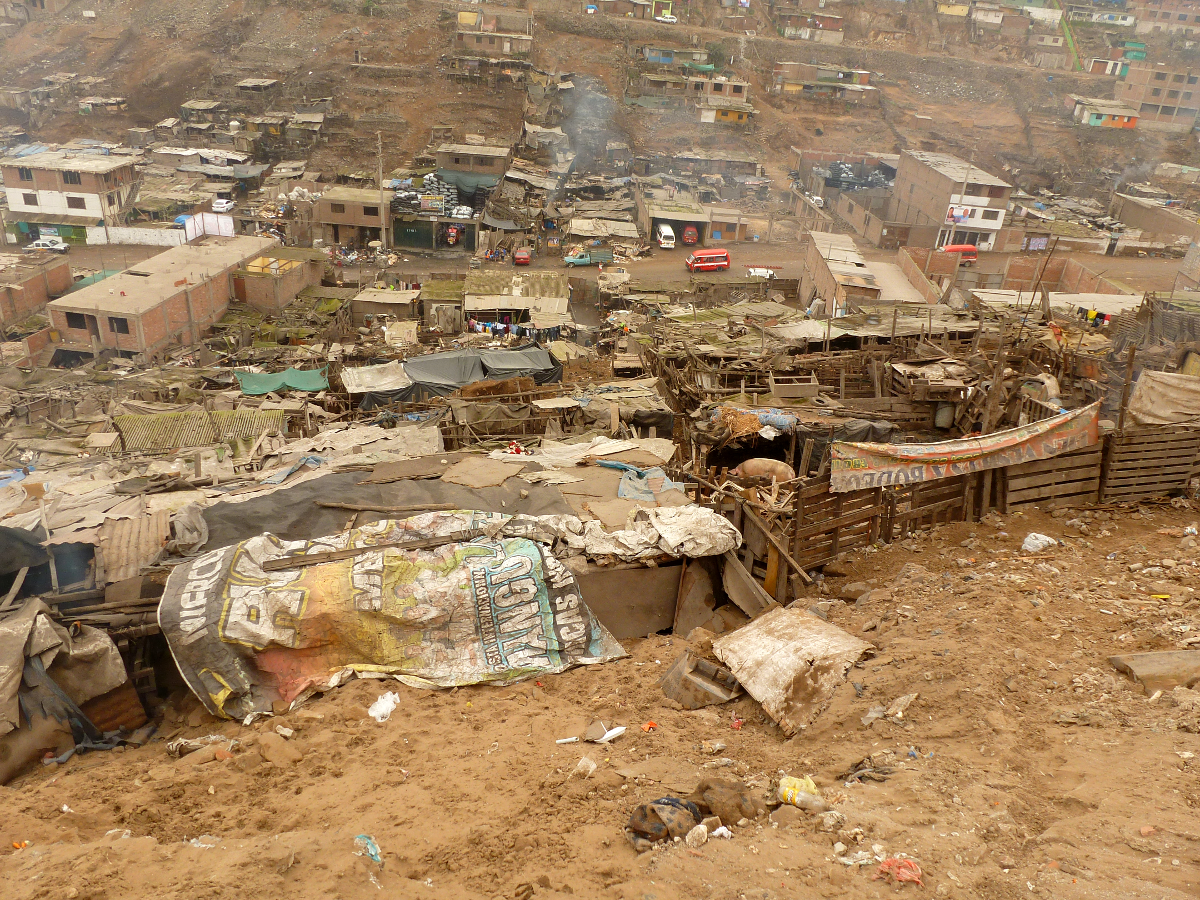
Small pig sheds intermingle with the homes in San Juan de Mira Flores, often causing problems with waste.
While we were walking through San Juan de Mira Flores, Benavides pointed to a cluster of barrels next to one of the low houses. Speaking through a translator, a student from the United States named Hima Patel who had come to Lima to volunteer with MedLife, he explained the water barrels you’ll see outside most houses in this area. They come in two colors: brown and blue.
The brown ones are expensive but excellent, as good as anything you could find in America. Well insulated and durable, they last about 10 years before needing to be replaced (eventually time, heat and erosion take their toll). The blue ones are old chemical containers from the docks. Taken off ships, once the cargo is emptied they’re hosed out and sold to people who can’t afford anything better. They sell for the equivalent of about $5.
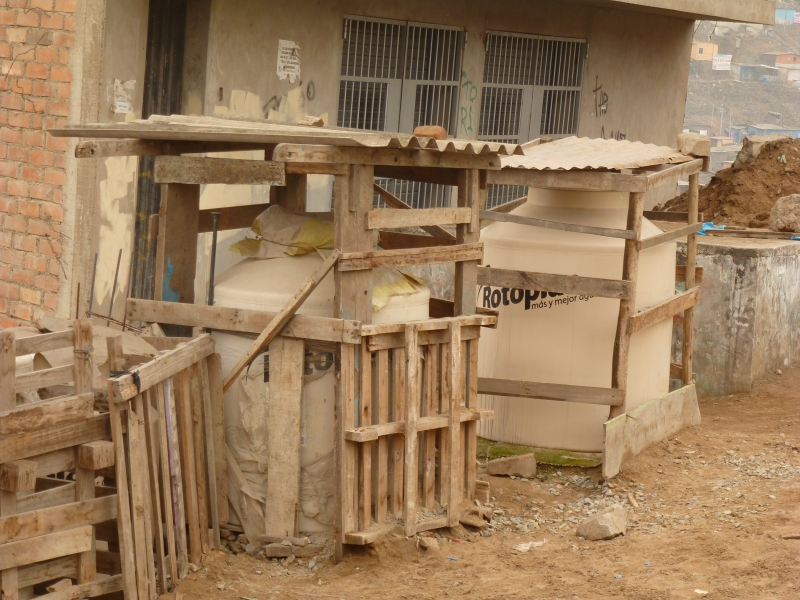
A home with the high quality water containers, actually installed against the house.
The result is an explosive cluster of stomach cancer, among those who can least afford to treat it.
“We have five nurses for 30,000 people,” said one resident of Pamplona, and her experience is representative. Although Peru technically has socialized medicine, with the right to free health care for all, that promise doesn’t mean much when the government doesn’t bother to actually send in any doctors. A health care system so overwhelmed with patients that it can barely see anyone, for most people here, may as well not exist at all.
Again, the robust network of private hospitals and insurance does little good for a population that can’t afford to pay for it.
Spend a few minutes with anyone from the hillside communities of Lima and you’ll hear similar stories. Relegated to the steep, stony outskirts of town (property nobody wanted but those pig farmers), injuries among the residents are common as they make their way up and down the harsh paths. It’s forced the NGO’s that work here to develop an odd specialty in stair building, as the number one most requested piece of infrastructure isn’t schools or daycares. It’s staircases so people can get to and from their homes safely (especially in the unlit night).
And yet the atmosphere here is oddly upbeat. Maybe it was because they were entertaining a foreign journalist, but all throughout these little communities there’s an attitude that things tomorrow can be just a little bit better than they were today. Small kindnesses, like a dog house built for a stray puppy or a pickup game of soccer for children, seem like a way of life. In every neighborhood I visited I was welcomed with warmth. People shared their hospitality with coffee, biscuits and, in one case, by inviting my MedLife guides and I to attend a birthday party.
I have worked in many places and met many people, but this was the first time (as either a lawyer or a journalist) strangers have ever greeted me with punch and cake.
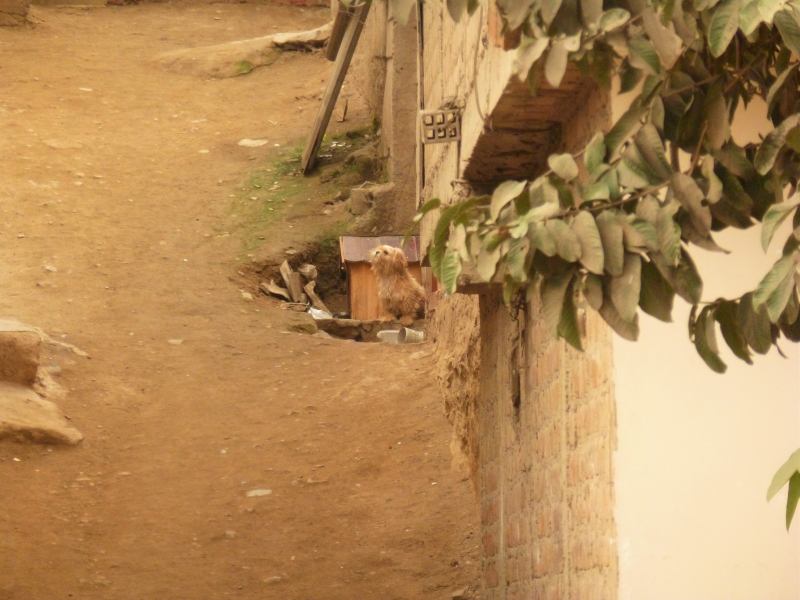
There’s something special about a community that cares for its small animals.
Standing in one neighborhood as night fell, the residents pointed down at the foot of the hill toward a concrete barricade separating them from the larger houses below.
“We call it the wall of shame,” Benavides said to me through Patel. At the food of a long, rock strewn path I could see what he meant. A 15 foot high wall snaked through the community topped with the razor wire so ubiquitous in this city. In the fading light I couldn’t see where it ended, and with its graffiti and community posters it looked like nothing so much as photos of the Berlin Wall. On the other side was manicured grass, swimming pools and houses that looked positively opulent so close to the tin and concrete bungalows of Pamplona.
“They built it to keep the poor people out,” he added.
At my side a woman appeared hefting a massive iron coffee pot.
“Mas cafe?” she asked, while a small girl offered up a plate of cookies.
The coffee was piping hot and sweetened beyond recognition (I’d had to make discreet inquiries at the first distribution to confirm that it was the strong, dark coffee this country is known for). As I drank and looked down at the wall built to pen them in, the small community I’d come to visit began dispersing back to their homes in the darkness or by flashlight.
Lost deep within Lima, it occurred to me that after this I would get to go home to electricity and running water, sooner or later. For Roberto and the rest of Benavides’ residents, home is a world where the government can’t be bothered to build a streetlight and strangers shelter homeless little dogs because it’s the right thing to do.
For decades these people fled the guns and knives of the Shining Path, hoping to find safety in the city. Today they may have safety, but many of their loved ones still die from simple neglect.
That hasn’t put down their optimism though. This is a community that will build its own wires and buy its own water one bucket at a time if it has to. If the doctors won’t come here, they will carry their 19 year old sons to physical therapy and lay stairs over a rockslide, because by the time they’re done tomorrow will be better than today.
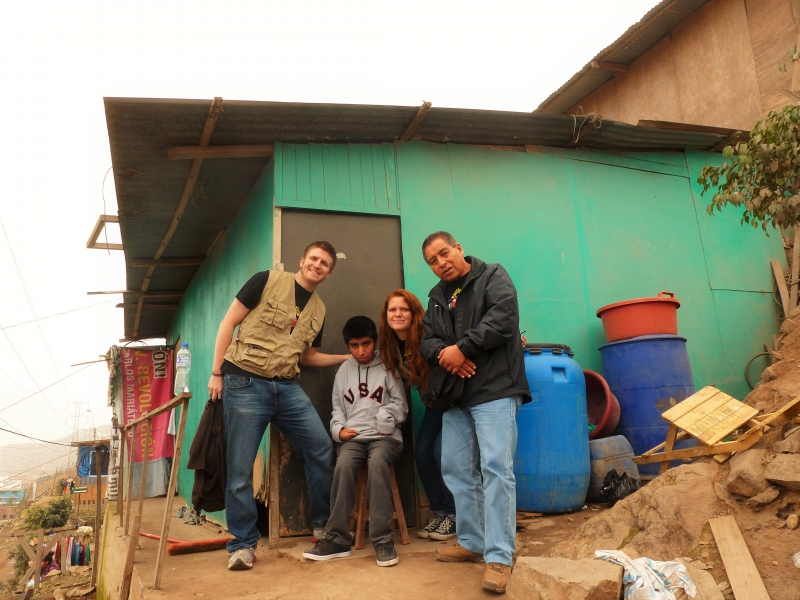
Roberto, center in his hoodie, with members of the Med Life team and Benavides on the far right.
- Write More Listicles - August 12, 2021
- Find The Hard Interview - July 28, 2021
- Using Your Voice - August 22, 2018

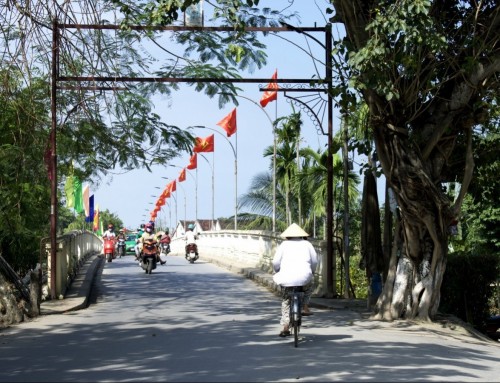
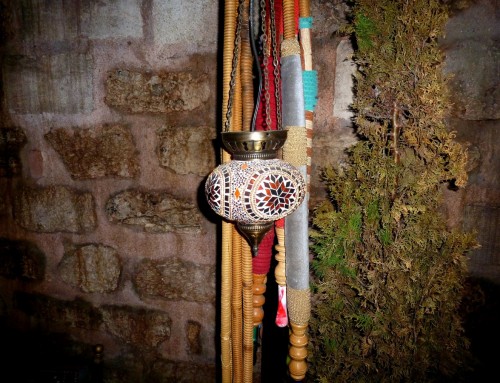
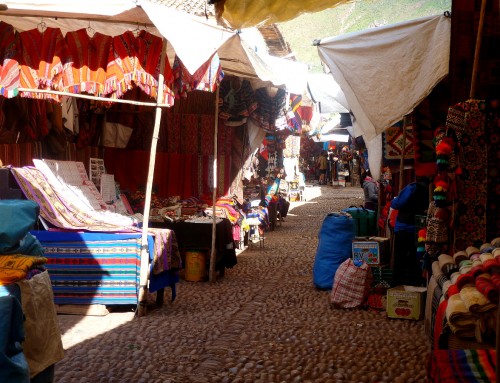
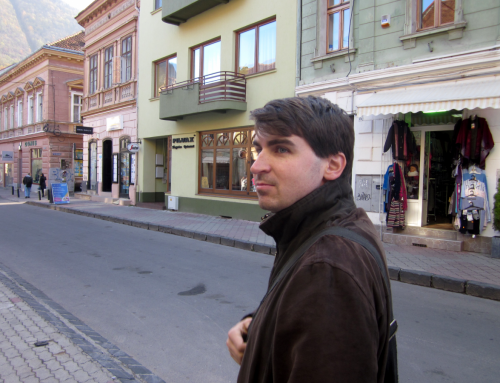
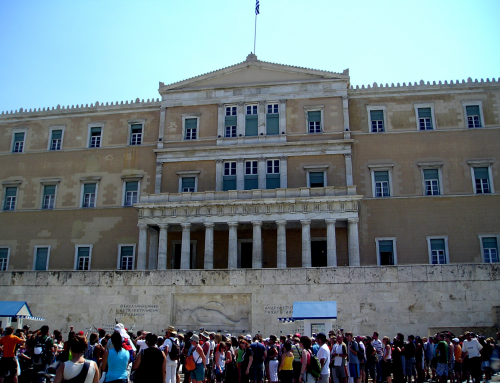
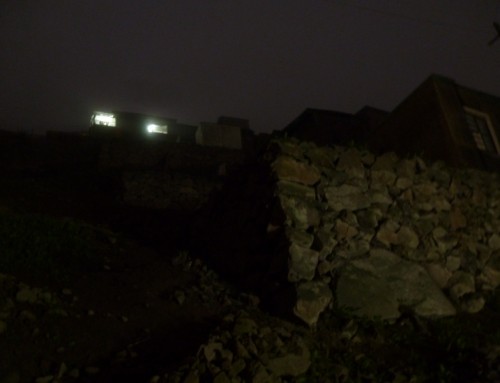
Leave A Comment